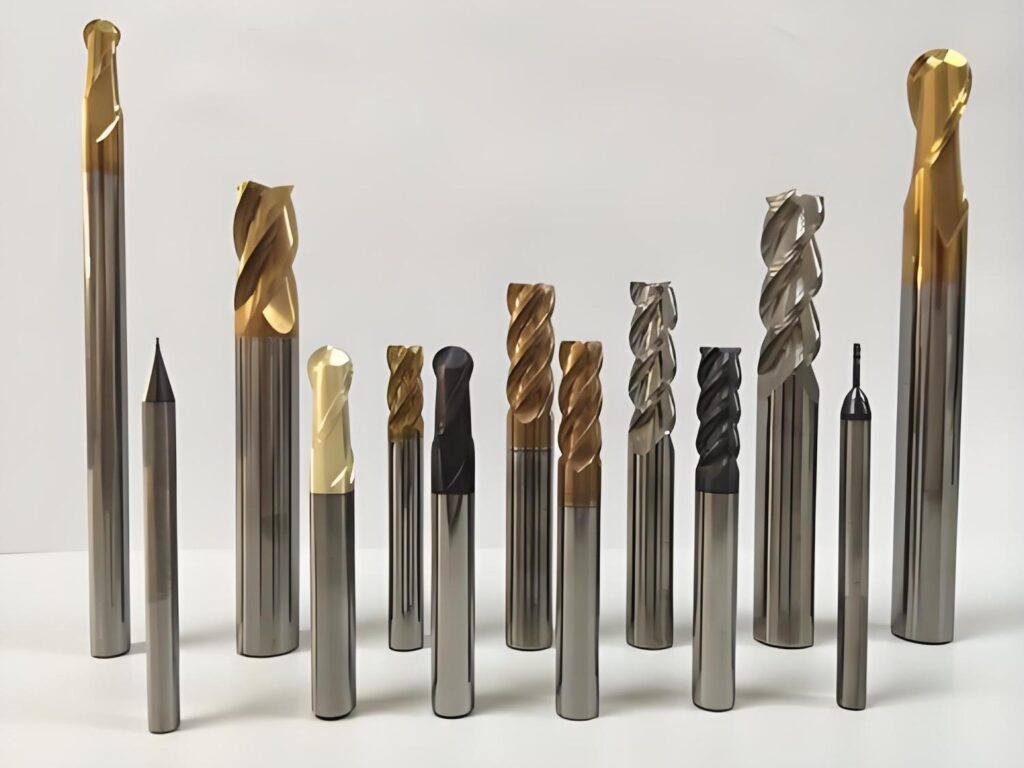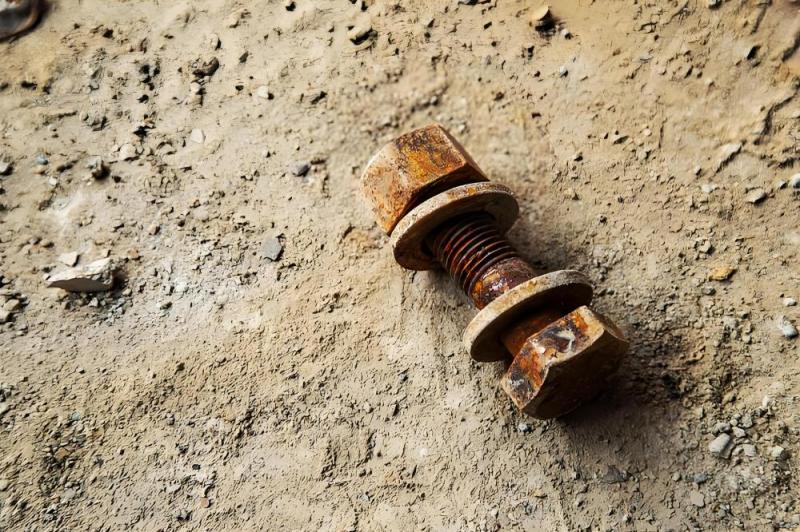Steel is a cornerstone of modern industry, prized for its strength, versatility, and durability. From skyscrapers to precision machinery, it’s hard to imagine a world without this essential material. Yet, one question often arises in discussions about steel: does steel rust? This blog dives deep into the science of steel corrosion, exploring its causes, types, prevention methods, and more, all while offering insights for industries like machining that rely on steel’s integrity.
Will Steel Rust?
Steel, an alloy primarily composed of iron and carbon, is widely used in industries like construction, automotive, and machining due to its robustness. However, steel’s iron content makes it susceptible to rust, a form of corrosion that occurs when iron reacts with oxygen and moisture. This chemical reaction forms iron oxide, commonly known as rust, which can compromise the structural integrity and appearance of steel components.
Rust is not just a surface issue; it can penetrate deep into the material, weakening it over time. For industries like machining, where precision and reliability are paramount, understanding whether steel rusts is critical. The short answer is yes, steel can rust under the right conditions, but not all steel behaves the same way, and various factors influence this process.
The Science Behind Rust Formation
Rust forms through an electrochemical process called oxidation. When steel is exposed to water (or moisture in the air) and oxygen, iron atoms lose electrons, reacting with oxygen to form iron oxide. This reaction is accelerated by electrolytes like salt, which is why coastal environments often see faster rusting. The resulting reddish-brown coating is brittle and flaky, unlike the protective patinas formed on metals like copper.
Why Does Rust Matter in Machining?
In the machining industry, where components must meet exact tolerances, rust can be a significant concern. Corroded steel parts may lose dimensional accuracy, leading to operational inefficiencies or failures in critical applications. Understanding the conditions that cause rust is the first step in preventing it, ensuring that machined parts maintain their performance and longevity.
Factors Affecting Rust on Steel
Several factors influence whether and how quickly steel will rust. By understanding these variables, industries can take proactive steps to mitigate corrosion risks. Below are the primary factors that contribute to rust formation on steel.
Environmental Conditions
Moisture is the primary catalyst for rust. Steel exposed to humid environments, rain, or even condensation is more likely to corrode. Coastal areas, with their high salt content in the air, accelerate rusting due to the presence of chloride ions. Temperature also plays a role; warmer conditions can speed up the chemical reactions that cause rust, while extremely cold environments may slow it down.
Steel Composition
Not all steel is created equal. The alloy’s composition significantly affects its rust resistance. For example, carbon steel, commonly used in machining for its strength, is highly prone to rust due to its high iron content. In contrast, stainless steel, which contains chromium, forms a protective oxide layer that resists corrosion. Other alloying elements, like nickel and molybdenum, can further enhance rust resistance.
Surface Condition
The condition of steel’s surface also influences rusting. Scratches, nicks, or rough surfaces provide crevices where moisture can accumulate, increasing the likelihood of corrosion. Polished or coated surfaces, on the other hand, are less susceptible. In machining, where surface finish is critical, proper handling and finishing techniques can significantly reduce rust risks.
Exposure Time
The longer steel is exposed to corrosive conditions, the more likely it is to rust. Continuous exposure to moisture without drying periods allows the oxidation process to progress unchecked. For machined components stored or used in harsh environments, protective measures are essential to limit exposure time.
Types of Steel Corrosion
Rust is just one form of corrosion that affects steel. Understanding the different types of corrosion is crucial for industries like machining, where material integrity is vital. Below are the most common types of steel corrosion.
Uniform Corrosion
Uniform corrosion occurs evenly across the steel’s surface, often in environments with consistent moisture and oxygen exposure. While it’s predictable, it can still weaken components over time. In machining, uniform corrosion might affect large steel parts exposed to humid conditions during storage.
Pitting Corrosion
Pitting corrosion is more insidious, creating small, localized holes or pits on the steel surface. These pits can penetrate deeply, compromising structural integrity. Pitting is common in environments with high chloride concentrations, such as marine settings, and can be particularly damaging to precision-machined components.
Galvanic Corrosion
Galvanic corrosion occurs when two dissimilar metals are in contact in the presence of an electrolyte, like saltwater. One metal acts as an anode and corrodes faster, while the other acts as a cathode. In machining, galvanic corrosion can occur if steel components are paired with metals like copper or aluminum in wet conditions.
Crevice Corrosion
Crevice corrosion happens in confined spaces where moisture and oxygen are trapped, such as under gaskets or in tight joints. This type of corrosion is a concern in complex machined assemblies where small gaps may exist, making regular inspection and maintenance critical.
How to Prevent Steel from Rusting
Preventing rust is a priority for industries that rely on steel’s durability. Fortunately, several strategies can effectively protect steel from corrosion, ensuring its performance in demanding applications like machining.

Protective Coatings
Applying coatings like paint, powder coating, or galvanizing creates a barrier between steel and the environment. Galvanizing, which involves coating steel with a layer of zinc, is particularly effective, as zinc corrodes preferentially, protecting the underlying steel. In machining, coatings are often applied to finished parts to enhance durability.
Alloying with Corrosion-Resistant Elements
Using corrosion-resistant alloys, such as stainless steel, is a proactive way to prevent rust. Stainless steel’s chromium content forms a passive oxide layer that self-repairs when damaged, offering excellent rust resistance. For high-precision machining applications, selecting the right alloy is key to balancing strength and corrosion resistance.
Environmental Control
Controlling the environment where steel is stored or used can significantly reduce rust. Storing machined components in dry, climate-controlled facilities prevents moisture accumulation. Dehumidifiers and proper ventilation can further minimize corrosion risks in workshops or storage areas.
Regular Maintenance
Routine inspection and maintenance are essential for preventing rust. Cleaning steel surfaces to remove contaminants, applying rust inhibitors, and promptly addressing scratches or damage can extend the lifespan of steel components. In machining, regular maintenance ensures that precision parts remain functional and reliable.
Cathodic Protection
Cathodic protection involves using a sacrificial anode, like zinc or magnesium, to protect steel. This method is commonly used in pipelines and marine applications but can also be applied to large machined structures exposed to corrosive environments.
How Long Does Steel Take to Rust?

The time it takes for steel to rust depends on several factors, including environmental conditions, steel type, and exposure duration. In ideal conditions—dry, indoor environments with minimal moisture—steel may take years to show signs of rust. However, in harsh conditions, such as coastal areas with high humidity and salt exposure, rust can appear within days or weeks.
Factors Influencing Rusting Time
Carbon steel exposed to constant moisture and oxygen may begin rusting within hours, with visible corrosion developing in a matter of days. Stainless steel, on the other hand, can resist rust for decades under similar conditions due to its protective oxide layer. Surface treatments, like galvanizing or painting, can further delay rust onset, sometimes by years.
Real-World Examples
In machining, steel components stored in humid workshops may develop surface rust within weeks if unprotected. Conversely, properly coated or alloyed steel parts used in controlled environments can remain rust-free for their entire service life. Understanding these timelines helps industries plan maintenance and select appropriate materials.
How to removing rust on steel?
Once rust appears, prompt action is necessary to prevent further damage. Here are effective methods to address rusted steel, particularly in the context of machining.
Mechanical Removal
Sanding, wire brushing, or abrasive blasting can remove surface rust, restoring the steel’s appearance and integrity. In machining, precision tools may be used to carefully remove rust without compromising dimensional accuracy.
Chemical Treatments
Rust removers, typically containing phosphoric or hydrochloric acid, can dissolve rust effectively. These treatments are useful for machined components with intricate geometries, where mechanical removal is challenging. After treatment, applying a rust inhibitor or coating prevents recurrence.
Repainting or Recoating
For rusted steel parts, removing rust and applying a fresh protective coating can restore functionality. In machining, recoating with paint or powder coating is common for large components exposed to the elements.
Replacement
In cases of severe corrosion, where structural integrity is compromised, replacing the affected steel part may be the only option. This is particularly true for precision-machined components where tolerances are critical.
Compared with Other Materials, Which One Rusts Faster?
Steel’s rusting behavior varies compared to other materials commonly used in machining and manufacturing. Below is a comparison of steel’s corrosion tendencies with other metals and materials.
Steel vs. Aluminum
Aluminum forms a protective oxide layer similar to stainless steel, making it highly resistant to corrosion. Unlike steel, aluminum doesn’t rust but can suffer from pitting corrosion in harsh environments. Aluminum generally corrodes more slowly than carbon steel but may not match the strength of steel alloys.
Steel vs. Copper
Copper develops a green patina (copper oxide) that protects it from further corrosion, unlike steel’s flaky rust. Copper corrodes more slowly than carbon steel in most environments, though galvanic corrosion can occur when paired with steel.
Steel vs. Stainless Steel
Stainless steel, a type of steel alloy, is far more resistant to rust than carbon steel due to its chromium content. In machining, stainless steel is often chosen for applications requiring corrosion resistance, though it may be more expensive.
Steel vs. Non-Metallic Materials
Non-metallic materials like plastics or composites don’t rust, as they lack iron. However, they may degrade in other ways, such as UV damage or chemical breakdown. In machining, steel is often preferred for its strength, despite its rust potential.
The Role of Precionn in Combating Steel Corrosion
In the machining industry, where precision and durability are non-negotiable, managing steel corrosion is a top priority. Precionn, a leader in the machining industry, understands the challenges posed by rust and incorporates advanced techniques to ensure the longevity of its steel components. By selecting high-quality alloys, applying state-of-the-art coatings, and adhering to rigorous quality control, Precionn delivers machined parts that resist corrosion and meet the industry standards.
Precionn’s commitment to excellence extends beyond manufacturing. The company offers expert guidance on material selection and maintenance strategies, helping clients choose the right steel alloys and protective measures for their specific applications. Whether it’s a precision component for aerospace or a robust part for industrial machinery, Precionn’s expertise ensures that rust doesn’t compromise performance. Visit Precionn’s website on Google to learn more about their innovative solutions and how they can support your machining needs.

